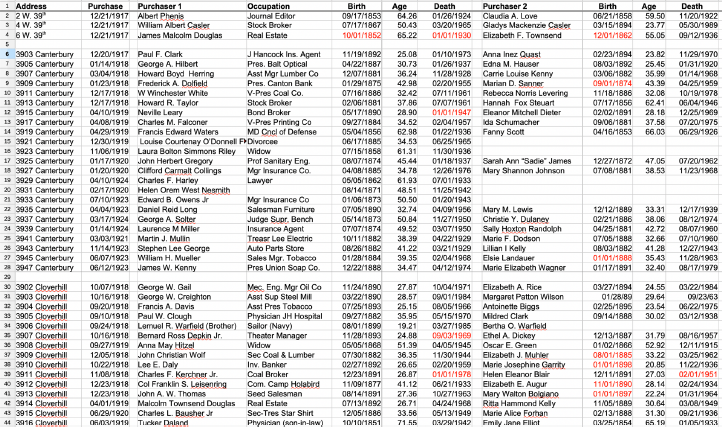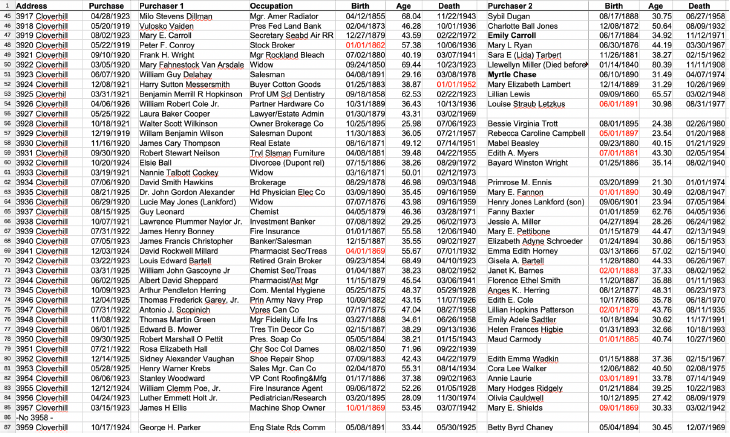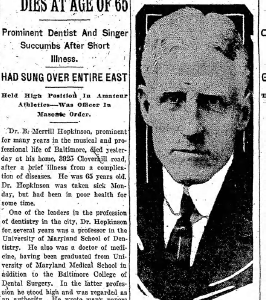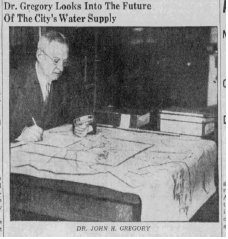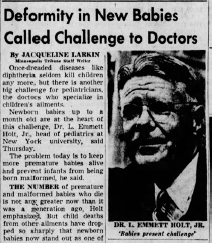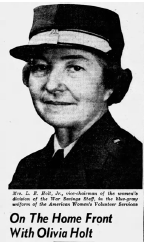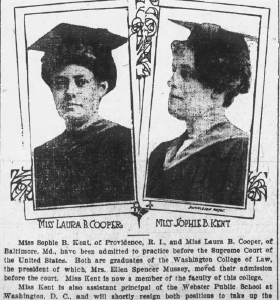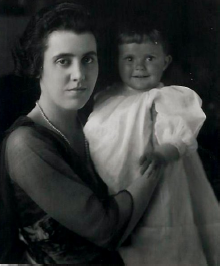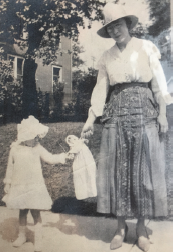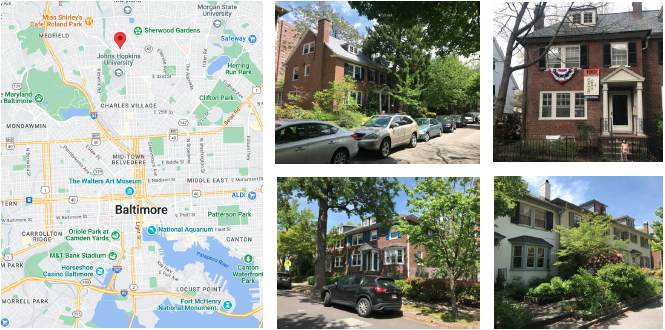
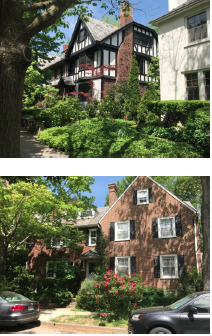
 Josh Cohen (Cloverhill rd) researched this fascinating history of University Homes:
Josh Cohen (Cloverhill rd) researched this fascinating history of University Homes:
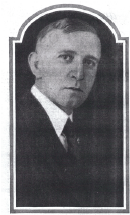
University Homes was built by the architect George R. Morris, who had moved to Baltimore after the Great Fire of 1904 to assist in the city’s reconstruction. Morris had built multiple residences and apartment buildings prior to developing the University Homes neighborhood. Morris had the concept of building a neighborhood that could provide all the modern conveniences of an apartment complex, to attract an upwardly mobile young professional market that wanted to remain in the city, but were desirous of home ownership.
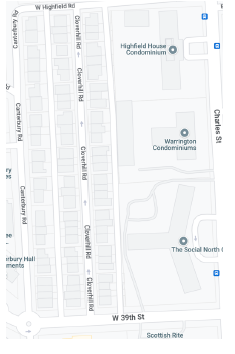
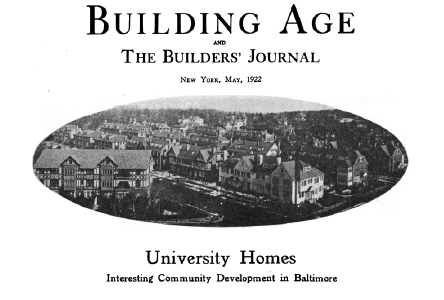 Starting in 1914, Johns Hopkins University had begun moving its campus from its downtown location to its new Homewood campus, a process that was complete by 1916. By then, the nearby Guilford neighborhood built by the Roland Park Company was already well established, and little land was available for development. In 1917, however, Morris, was able to cut deals with the owners of the various large estates that were located along Charles Street (just beyond the new Hopkins campus). He purchased the back lots of their properties for his University Homes concept.
Starting in 1914, Johns Hopkins University had begun moving its campus from its downtown location to its new Homewood campus, a process that was complete by 1916. By then, the nearby Guilford neighborhood built by the Roland Park Company was already well established, and little land was available for development. In 1917, however, Morris, was able to cut deals with the owners of the various large estates that were located along Charles Street (just beyond the new Hopkins campus). He purchased the back lots of their properties for his University Homes concept.
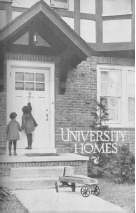
The first units were complete by the end of that year; however, construction was slowed by the market conditions created during World War I, and the project would continue into the 1920s. Photographic evidence shows that the neighborhood was completed circa 1921/22; however, sales of units continued for an additional 4 years.
Promotion – Making University Homes Possibly the Most Famous Housing Development in America in the 1920s!
Morris’ ideas for both the construction and promotion of University Homes were truly innovative for their time. All the homes were built with gas heating and equipped with set-it-and-forget-it thermostats and Chambers gas stoves. It was the first such all-gas community built in the United States! Previously heating was supplied by coal and basements were dirty and uninhabitable.
The innovation was such a big deal that an artist rendering of what the neighborhood would look like when complete was created for BG&E magazine. That image would go on to be featured in multiple journals and magazines.
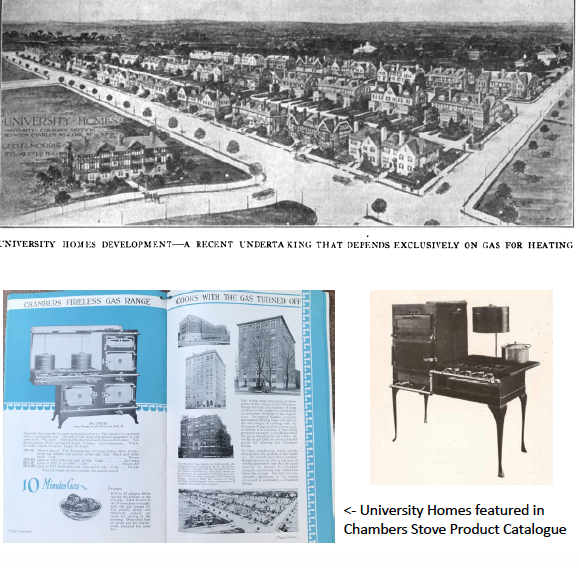


All homes had built-in and fireproofed car garages (at a time when the popularity of automobiles was just taking off), as well as Kernerator garbage incinerators. Homes were sold
with the option of an electric refrigerator, and electrical service was buried to improve the quality of the living space around the home.
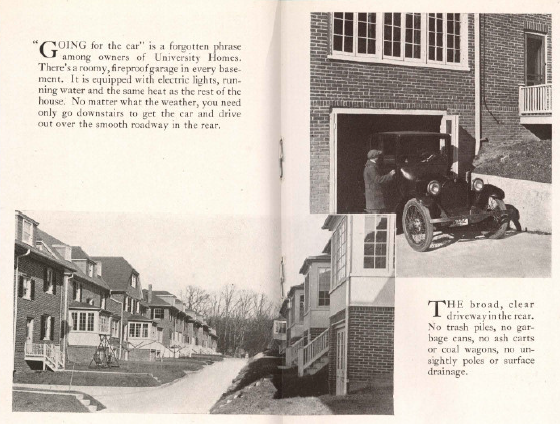

The proliferation of images of the University Homes development across the county was no fluke occurrence. George Morris was a consummate marketer and came up with novel ways to promote the neighborhood. It started with a multi-page photo brochure explaining the modern conveniences provided by the homes. These photos then served as the basis of materials that were sent to journals and magazines. National Real Estate Review and Builders Age each produced two articles on University Homes, the first highlighting their construction and novelty and the second discussing how the homes were marketed.
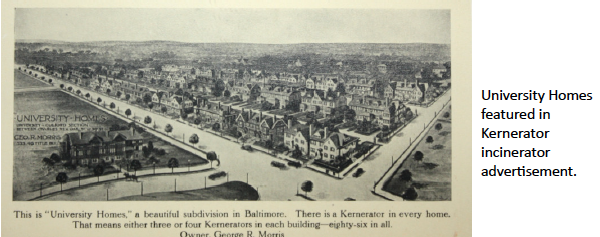
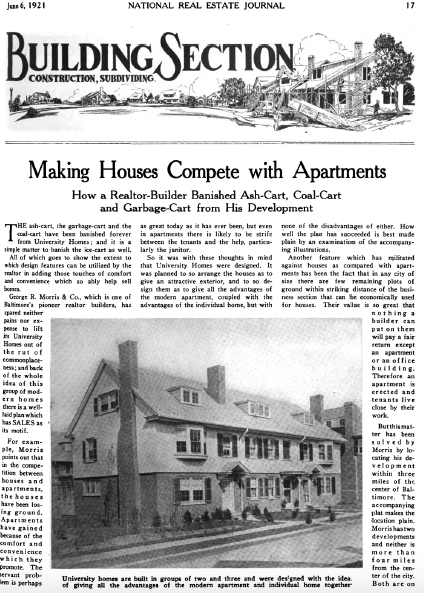
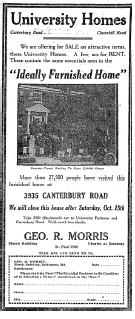
In what was truly a first-of-its-kind promotion, Morris worked with Baltimore retailers and manufacturers to completely outfit a model home in the neighborhood with more than $52,000 of goods (nearly 1 million in today’s dollars) A booklet entitled “The Ideally Furnished Home” was created that was given to visitors that toured the homes. The brochure included detailed explanation of the goods on display and where they could be purchased. The event was an unmitigated success, with more than 27,500 people visiting the model home!
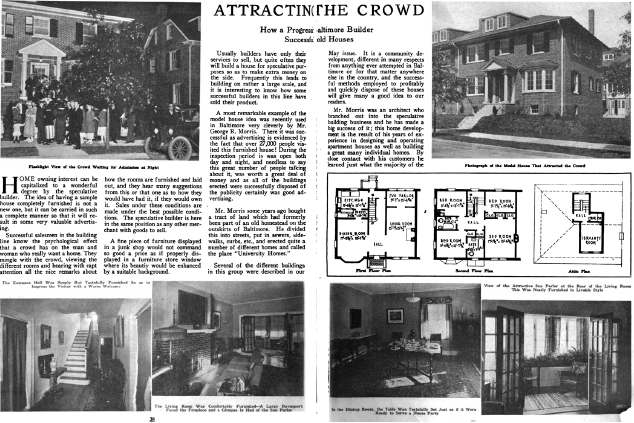
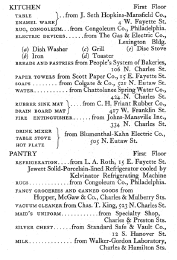
The First Families of University Homes
While it is fascinating to contemplate how George Morris turned University Homes into one of the most widely known concept communities in the United States, of course,neighborhoods are much more about people than they are about architecture and conveniences. As the centennial approached, neighbor Joshua Cohen decided he wanted to know something about the first folks that lived in the neighborhood. Utilizing online real estate records and block books, Cohen was able to trace the home deeds to reveal the names of first homeowners.Utilizing digitized Baltimore Sun papers, Ancestry.com and other online resources, Cohen was able to then create family trees of all 84 first families of University Homes! In some cases, he was able to contact surviving descendants to get additional information, photos and anecdotes about the first families.
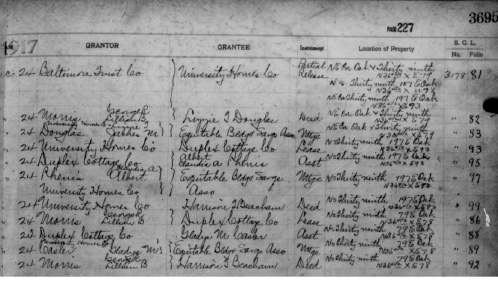
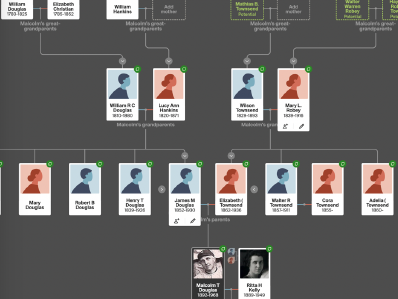
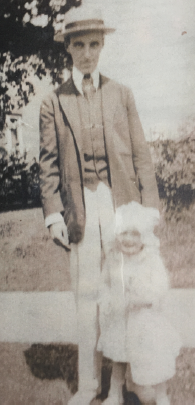
Little by little all the first families were revealed to be real Baltimoreans that had full and fascinating lives! For example, 3903 Cloverhill was purchased October 16,1918 by George W. Creighton (b. 3/22/1890, d. 9/1/1984) and his wife Margaret Patton Wilson (b. 1/28/1889, d. 9/23/1963).They brought up two children there: Margaret Creighton (b. 6/11/1915, d. 3/17/1993) and George W. Creighton III (b. 6/22/1918, d. 7/27/2008).
George Creighton came to Baltimore in1918 as an assistant general superintendent of the Hess Steel company. He worked in various industrial jobs and by the end of the 1920s he became then the VP of the Industrial Corporation of Baltimore —consulting with corporate heads about engineering problems and plant operation analysis.
During WWII, he became the Maryland Manager of the War Production Board helping coordinate the economy’s transition from civilian to war production. After the war, he worked for the Baltimore Chamber of Commerce. He was an elder at the Second Presbyterian Church.
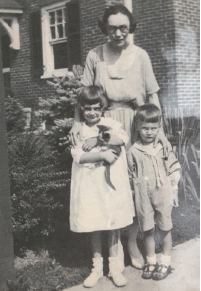
Margaret Patton Wilson was a native of Indiana PA, active in the Second Presbyterian church and a president of its women’s association. She died at the home in 1963.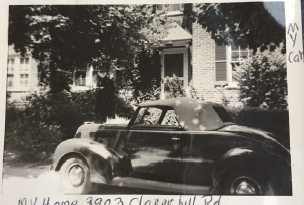
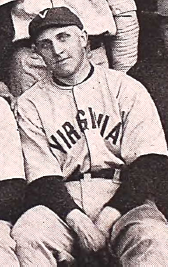
Another example of the rich family history that was revealed by Cohen’s genealogical work was the story of the first homeowners of his house at 3914 Cloverhill Road. It was purchased April 1, 1919 by Malcolm Townsend Douglas (b. 7/13/1892, d. 4/24/1968) and his wife Rita Hammond Kelly (b. 11/5/1889, d. 3/8/1949). They brought up their daughter Elizabeth Douglas (b. 1918, d. 2011) at the home. Malcolm went to the University of Virginia where he studied law. While there, Malcolm became an accomplished Shortstop for the University baseball team. Upon graduation multiple baseball teams made offers to get him to join the majors, including the Baltimore Orioles.
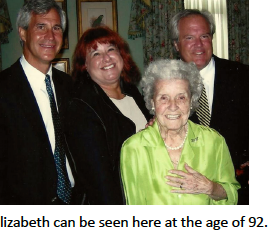
Ultimately, Malcolm decided to forego baseball and join his father’s real estate business. James Malcolm Douglas was another University Homes first family, purchasing 6 W. 39th Street with his wife Elizabeth F. Townsend. Ritta’s sister, Lillian I. Kelly was also in the neighborhood, purchasing 3943 Canterbury along with her husband Stephen Lee George. Malcolm and Ritta’s daughter Elizabeth had a long and happy life. She had two sons, Michael and Patrick Miller. Patrick still lives in the Baltimore area and came to a TCNA meeting where we discussed the history of the first families. He was welcomed as a celebrity!
There is not enough space here to discuss the histories of all 84 first families. However,behind every home are truly fascinating, heart-warming and at time tragic stories of the real people that lived in these homes before us. We are all part of the flow of human history and the American experience.
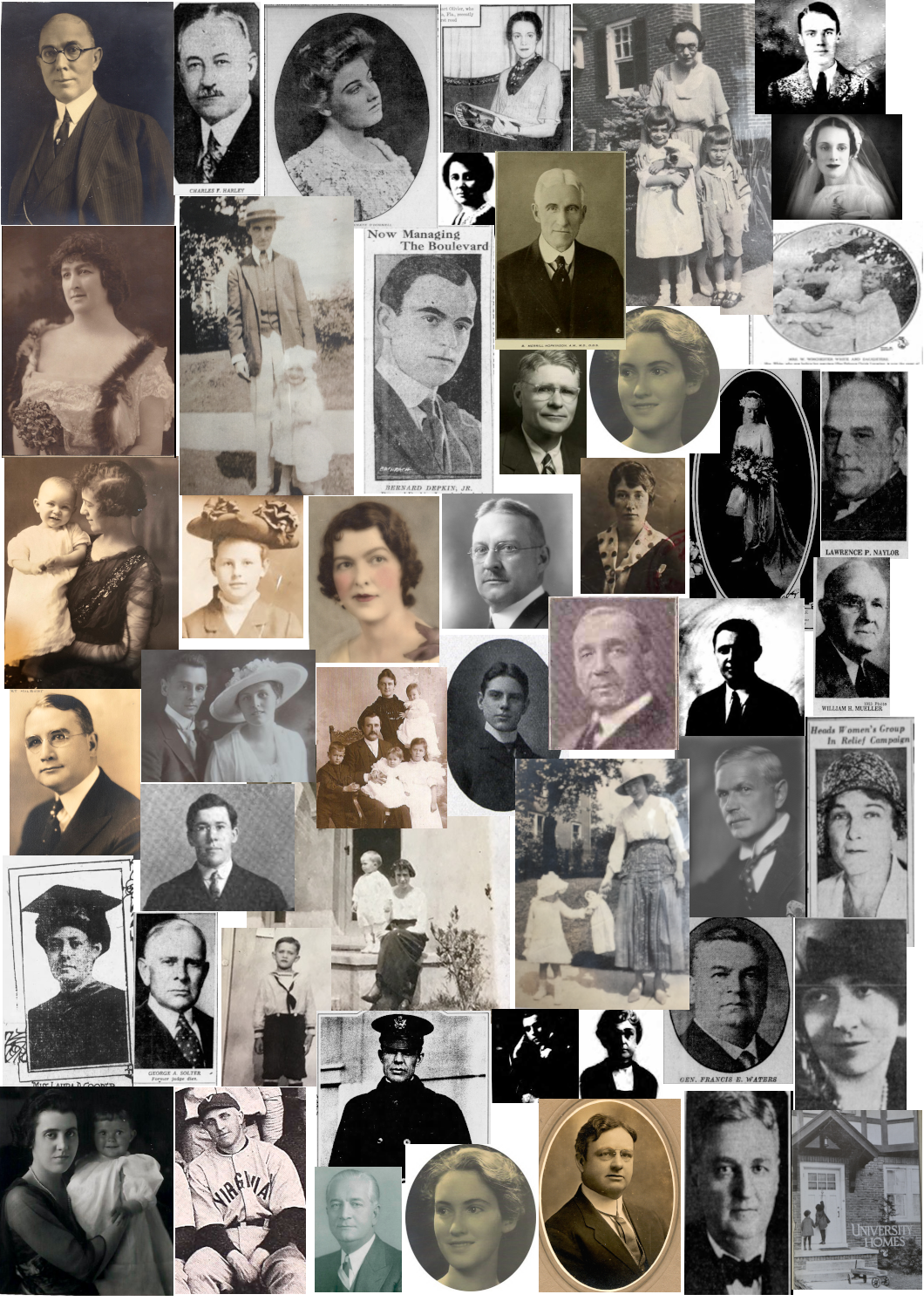
Below you can see the list of the first homeowners of our beloved University Homes. If you are curious about getting to know any of them with a bit more detail, your neighbor Joshua Cohen can help you uncover their stories.
